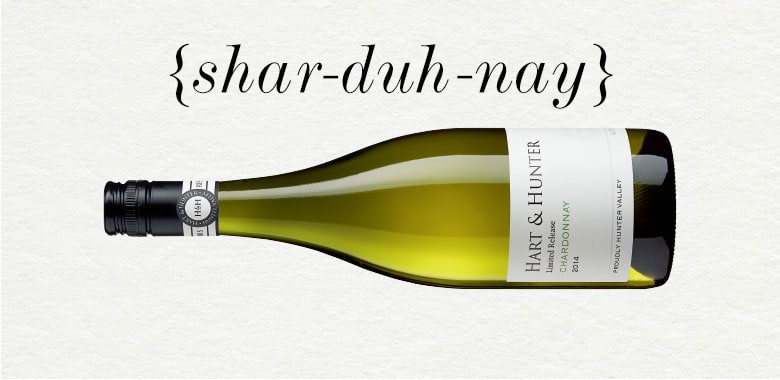
Wine
What is Chardonnay?
The world’s most popular white wine, Chardonnay is a versatile white grape variety that originated in the Burgundy wine region in France and is grown widely throughout Australia and the world.
But what does Chardonnay taste like? Is Chardonnay a dry wine or a sweet wine? What foods work well with Chardonnay? Let’s take a dive into the rich, textural layers and find out all there is to know about this versatile and popular white wine.
Shop Chardonnay
Why is Chardonnay so Popular?
Keen wine fans will know that the popularity of Chardonnay in Australia has had its ups and downs over the years, however, Australian wine drinkers have rekindled their Chardonnay love affair – this deliciously diverse drop accounts for over 42% of all white wines produced across the country.
As Australia’s most widely planted white variety, the range of styles produced is constantly evolving and being refined. This versatility means that Chardonnay appeals to a wide spectrum of wine drinkers.
Chardonnay is grown in every wine region in Australia but the cooler regions produce the elegant Chardonnays, such as Margaret River and Adealide Hills.
Chardonnay pairs well with white meats like fish and poultry and it can be cellared for up to 5 years.
Chardonnay is a moderatly sweet wine that is all about balance and refreshement.
Where is Chardonnay from?
Chardonnay is thought to have originated in France’s Burgundy region and is now one of the world’s most planted white grape varieties. Chardonnay arrived in Australia as part of the James Busby collection in 1832, and the Mudgee region of NSW has strong claims to have direct lineage to these original cuttings. However, it wasn’t until the 1970s that Chardonnay came into vogue in Australia, when tastes evolved from heavy reds, and it was the Hunter that led the way. Tyrrell’s 1971 Vat 47 Chardonnay started Australia’s love affair with the variety and Chardonnay sales boomed in the 80s and 90s.
Chardonnay in Australia
Of all the white varietals, Chardonnay responds best to winemaker influence. This broadens the style possibilities, with winemakers producing wines that they believe are most desired. This was definitely the case when the market was dominated by the broader, toastier styles that were often worked hard by the winemaker and had strong secondary characters. These wines were big, rich and full-bodied with most not ageing past five years.
The popularity of un-oaked examples emerged to counter this and now the vogue points towards the cooler regions. These styles are refined, distinctive and are often more expressive about the vineyard site, region and season. Winemakers are now responding to the personality of the fruit before intervening in the winery.
A versatile variety, Chardonnay thrives in a diverse range of climates from cool climate regions such as Margaret River, Adelaide Hills, the Yarra Valley and Tasmania, as well warmer regions like the Hunter Valley.
What are the best Chardonnay Regions in Australia?
Warm inland regions like the Murray Darling, Riverland and Riverina produce the majority of good quality, well-priced Australian Chardonnay that show ripe tropical and stonefruit characters. These may often be multi-regional blends labelled with South Eastern Australia as the origin.
ADELAIDE HILLS
This cool region is highly suited to Chardonnay. The wines are elegant, finely structured, typically with white peach and nectarine flavours.
MARGARET RIVER
Margaret River is Western Australia’s most well-known Chardonnay region. The wines are full-flavoured, rich and powerful, with the best examples having the ability to age for over a decade.
TASMANIA
The cool climate and suitable soils in Tasmania produce elegant Chardonnay with piercing acidity and intense flavours. A good proportion of Tasmanian Chardonnay is used in the production of high-quality Sparkling wines.
VICTORIA
Victoria also produces some top end Chardonnay, particularly from the Yarra Valley, Mornington Peninsula and Geelong regions. These regions produce a diverse range of Chardonnay from elegant, cool climate styles with fantastic fruit definition through to big, bold, generous styles with an emphasis on winemaking influences.
NEW SOUTH WALES
The Hunter, Tumbarumba, Orange, Mudgee and New England regions all produce great Chardonnay. The Hunter styles tend to be a little fuller, while Tumbarumba produces tight, elegant stonefruit styles. The cool, elevated climates of New England, and Orange produce restrained wines with soft peach and melon profiles, while those from Mudgee tend to be rich and full.
What the experts say
To find out more about this charming varietal, we caught up with Bruce Tyrrell of Tyrrell’s Wines, Adam Wadewitz of Shaw + Smith, Steve Webber of De Bortoli Wines and Adrian Sparks of Mount Pleasant.
Adam Wadewitz, Senior Winemaker, Shaw+Smith, Adelaide Hills

Drinkers in Australia can be pretty excited by the sheer quality of Australian Chardonnay at the moment. We’ve had our existential moment when the pendulum swung back hard from the big cuddly wines to the skinny, lean wines, and now the majority of top producers are finding balance, texture, flavour and length in that middle ground area. There are great options out there for every drinker’s particular taste.
Part of what makes the Hills a special region for Chardonnay is obviously the climate and the other exciting element is the diversity of producers and styles. With plantings at a range of altitudes, up to about 600m, we’re always finding cooler spots for great table Chardonnay. Vineyards that would have once only been thought of in terms of sparkling base wines, have been re-imagined from a management point of view and are producing thrilling Chardonnays with beguiling natural acidity, flavour and intensity. Then you overlay great vineyards with dozens of different brains and philosophies and you uncover the beating heart of fine Chardonnay in South Australia. Young guns and older hands are mixing it up together, experimenting, collaborating, recognising good dirt, respecting the fruit and creating engaging brands and stories for the drinker.
- Adam Wadewitz, Senior Winemaker, Shaw+Smith, Adelaide Hills
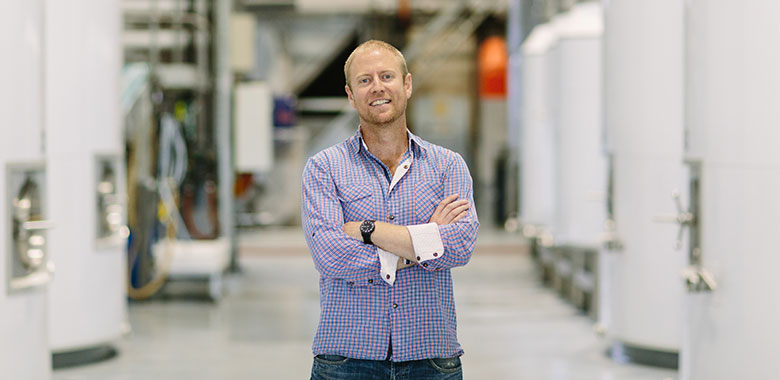
ADRIAN SPARKS – CHIEF WINEMAKER, MOUNT PLEASANT, HUNTER VALLEY
Australian Chardonnay has come of age in the last decade, with producers pushing the boundary of what can be achieved. We have so many sites and regions available to produce unique and interesting wines from all across Australia, and the future for Chardonnay looks incredibly exciting.
The Hunter produces rich, ripe wines, with beautiful freshness and vitality. The warm, sunny days lend themselves to powerful, rich flavours which wine lovers can enjoy all year round.
- Adrian Sparks, Chief Winemaker, Mount Pleasant, Hunter Valley
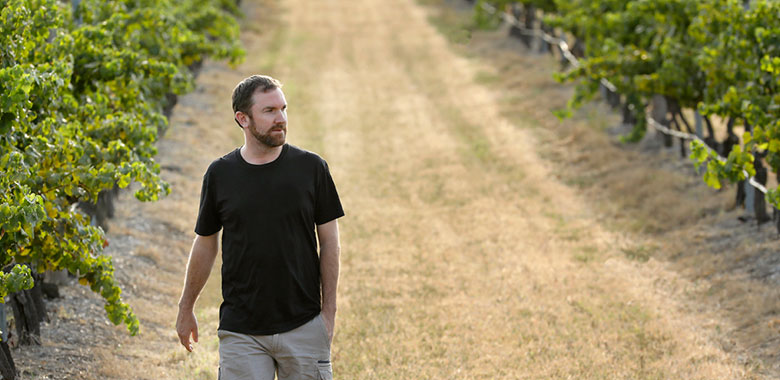
BRUCE TYRRELL – CEO, OWNER, TYRRELL’S WINES, HUNTER VALLEY
What makes Australian Chardonnay so special is the diversity of Australian grape growing regions and the fact that Chardonnay can be grown quite well in almost any conditions. There’s also the desire, and the ability of Australian winemakers to continue to push for higher and higher quality.
The Hunter Valley, according to all modern doctrines, should not be capable of either growing, nor making Chardonnay, but it does. The oldest producing Chardonnay vineyard in the world is here in the Hunter Valley. The best of the region are wines that can live as long as the Semillons – they have the natural strength of acid and lower pHs to ensure that long life.
- Bruce Tyrrell, CEO, Owner, Tyrrell's Wines, Hunter Valley
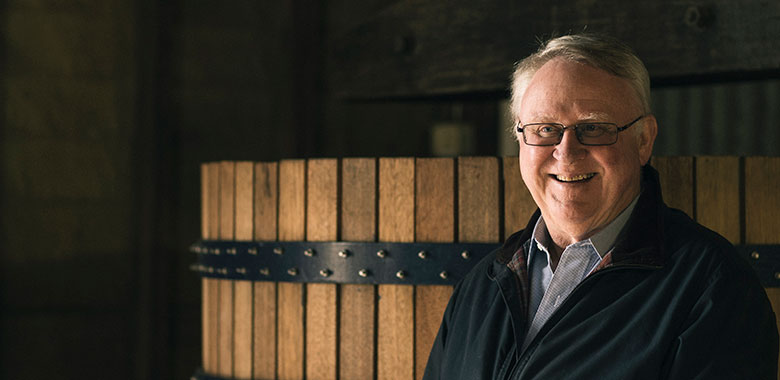
STEVE WEBBER – CHIEF WINEMAKER, DE BORTOLI WINES, YARRA VALLEY
Chardonnay grown on the right sites in Australia can be absolutely amazing.
The Yarra Valley naturally produces fine minerally Chardonnay from a range of sites and soil types. The best sites are highly individual and do show characters of their place, and I think this is why the Yarra Valley is so special for the variety.
- Steve Webber, Chief Winemaker, De Bortoli Wines, Yarra Valley

What does Chardonnay taste like?
There is quite a diversity in Chardonnay styles and therefore taste profiles, and much of that comes down to the winemaker. However, like any variety there will be regional nuances and even vineyard-specific nuances. Fruit notes commonly displayed in Chardonnay include peach, grapefruit, apple and melon.
The two most significant decisions made in the winery that shape the final wine in the bottle are the presence (or absence) of oak, and the approach to fermentation taken by the winemaker.
While the bigger, heavily oaked styles of years gone by have given way to more nuanced Chardonnays that are more expressive of the vineyard, region and season, oak continues to play an important role in Chardonnay production.
Ageing by oak introduces distinctive characters that are often mistaken for attributes of the grape itself. It’s where many wines get those delicious notes of baked apple or pie crust – common in using oak barrels – or the light vanilla and struck match notes that arise from using toasted new oak or oak chips in the fermenting process. The newer and smaller the barrel, the less nuanced and more forward these characters will be in the final wine.
In malolactic fermentation, the malic acid which is naturally present in grape must is converted to softer-tasting lactic acid. One of the by-products of chemical reactions produced by this process is diacetyl, which contributes to the buttery flavour associated with oaked styles of Chardonnay.
Additional elements that will also have some effect on the taste of the final product include harvest date, temperature at pressing, portion of free run juice, age of maturation, and fermentation of cloudy or filtered juice.
Is Chardonnay a wine or Champagne?
The Chardonnay grape is capable of such diversity of expression that there is no single, universal ‘style’ of Chardonnay. It is featured prominently in both still and sparkling styles of wine.
While it is not ‘Champagne’, as that is a designated wine exclusive to the famed ‘Champagne region’ in northern France, it is one of the three mainstay grape varieties used to produce Champagne, along with Pinot Noir and Pinot Meunier. Similarly, it is hugely popular in the production of French-style Sparkling wines in Australia, much-desired for its citrussy, minerally characters.
Is Chardonnay a dry or sweet wine?
Chardonnay is typically categorised as a dry wine.
What food pairs well with Chardonnay?
With its diversity in styles, Chardonnay can be matched with a wide range of dishes.
The lean, elegant styles with pristine acidity are perfect with seafood such as oysters, shellfish and fish and chips.
Medium bodied Chardonnays pair well with semi-hard, medium aged cheese, creamy pasta dishes, poultry and dishes cooked in butter, while full-bodied Chardonnay from warmer regions or those that have enjoyed some time in oak need dishes that are rich in both protein and sauces – lobster mornay and poached salmon with caper butter.
Adam says his favourite match comes from Shaw + Smith’s Friday lunches. “We host a Friday Table for Shaw + Smith visitors which gives them a great behind-the-scenes look at our vineyards and winemaking and finishes with a delicious lunch cooked by Ali Seedsman of Walk The Talk fame. She does a beautiful scallop and snapper terrine to match with the current and a back vintage of our M3 Chardonnay,” he explains. “A lot of people like red wine and cheese, but I think Chardonnay and hard cheese is a really under-rated match…so grab a chunk of aged Comte and kick back with some good Hills Chardonnay.”
Steve Webber also chooses a fish dish to match with his Yarra Valley Chardonnay – “Yarra Valley Chardonnay is so elegant with a fine minerally texture and it pairs perfectly well with pan fried John Dory.”
“I know it’s pretty predictable, but roast chicken is always a favourite with a Hunter Chardonnay,“ says Adrian.
Bruce Tyrrell cheekily agrees, “Chicken of course is the classic match, but you could get adventurous and try it with something a little different like crocodile, snake and emu, because they all taste like chicken!”
Recipes that pair well with Chardonnay
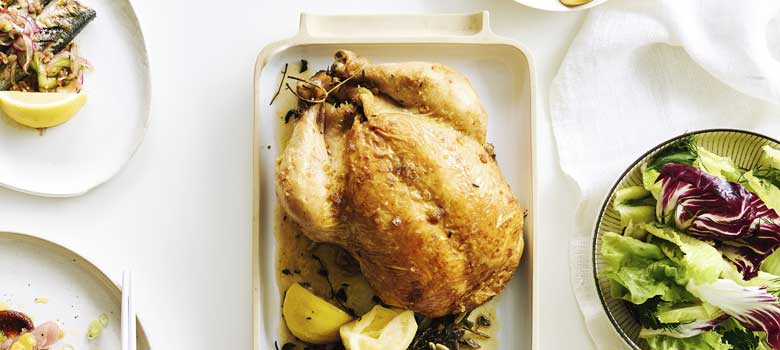
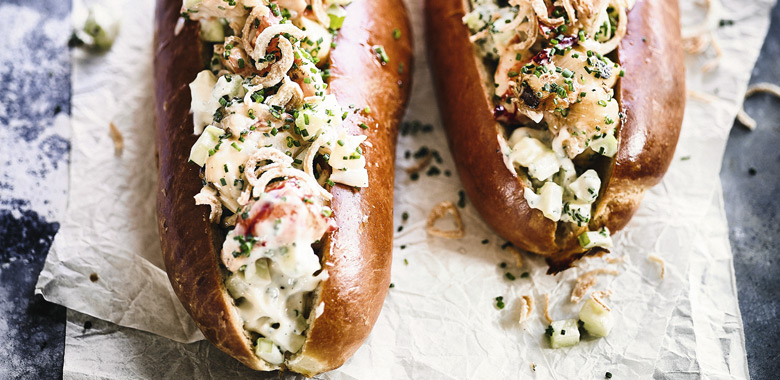
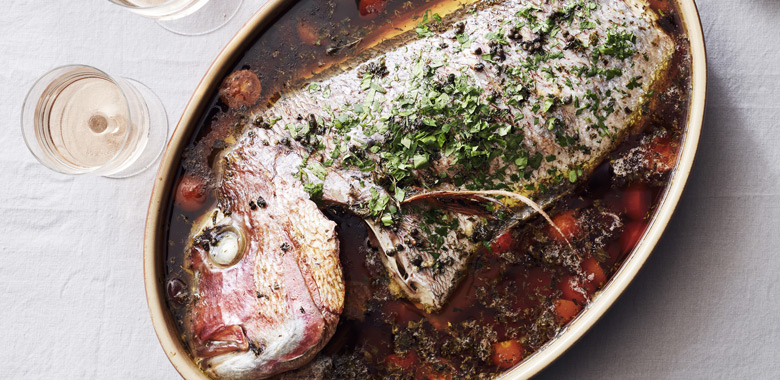
What is a good bottle of Chardonnay?
Keen to buy a bottle of this popular and versatile drop, but not sure what to pick? Our Tasting Panel tests and rates thousands of wines each year according to Australian wine judging criteria, to ensure that you are getting the best. All the wines we sell are rated at Bronze Medal standard or above, so you know you can count on the quality. We have a fantastic range of Chardonnay expressions in our Wine Shop – check them out now.